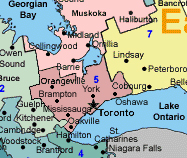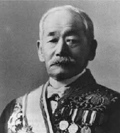| The Judo Rank System
Achievement in Judo is recognized by a series of ranks. The student ranks are called kyu and are usually differentiated by colored belts ( obi ). Different colors may be used around the world and in some countries there are more than 6 kyu ranks. The ten black belt, or expert, ranks are called dan .
learn
more
|
|
Find a JuDo Class

Click here to find a club in Ontario, Canada
|
Judo is many things to different people. It is a fun sport, an art, a discipline,
a recreational or social activity, a fitness program, a means of self-defense
or combat, and a way of life. It is all of these
and more.

Kodokan Judo comes to us from the fighting system of feudal Japan. Founded in 1882 by Dr. Jigoro Kano , Judo is a refinement of the ancient martial art of Jujutsu. Dr. Kano, President of the University of Education, Tokyo, studied these ancient forms and integrated what he considered to be the best of their techniques into what is now the modern sport of Judo.
Judo was introduced into the Olympic Games in 1964 and is practiced by millions of people throughout the world today. People practice Judo to excel in competition, to stay in shape, to develop self-confidence, and for many other reasons. But most of all, people do Judo just for the fun of it.
Judo is Fun!
As in all sports, Judo has a strict set of rules that governs competition and ensures safety. For those who want to test their skills, Judo offers the opportunity for competition at all skill levels, from club to national tournaments, to the Olympic Games. There are separate weight divisions for men and women, and boys and girls.
Judo is best known for it's spectacular throwing techniques but also involves considerable grappling on the ground utilizing specialized pins, control holds, arm locks, and Judo choking techniques . Judo emphasizes safety, and full physical activity for top conditioning. Judo is learned on special mats for comfort and safety.
Judo is unique in that all age groups, both sexes, and most disabled persons can participate together in learning and practicing the sport. Judo is an inexpensive, year-round activity, that appeals to people from all walks of life. Many people over sixty years of age enjoy the sport, as well as very young boys and girls.
Judo develops self-discipline and respect for oneself and others. Judo provides the means for learning self-confidence, concentration, and leadership skills, as well as physical coordination, power, and flexibility. As a sport that has evolved from a fighting art, it develops complete body control, fine balance, and fast reflexive action. Above all, it develops a sharp reacting mind well-coordinated with the same kind of body. Judo training gives a person an effective self-defense system if the need arises.
The Judo Rank System
Judo created the system of ranks, now used in most other martial arts, that recognize a person's degree of knowledge, ability, and leadership. There are separate ranks for juniors (under 17) and seniors. Judo ranks are identified by colored belts, and ten degrees of advanced grades for black belts. Regular advancement encourages students to achieve more.
Principles and Goals of Judo
Judo, which is translated as the "gentle way", teaches the principle of flexibility in the application of technique. This is the flexible or efficient use of balance, leverage, and movement in the performance of Judo throws and other skills. Skill, technique and timing, rather than the use of brute strength, are the essential ingredients for success in Judo. For example, in Judo classes you may learn how to give way, rather than use force, to overcome a stronger opponent.
The principles of Judo, such as "Maximum Efficiency" and "Mutual Welfare and Benefit", can also be used in our dealings with others in life. The ultimate goal in Judo is to develop oneself to the maximum extent possible, always striving for perfection, so that you can contribute something of value to the world.
|